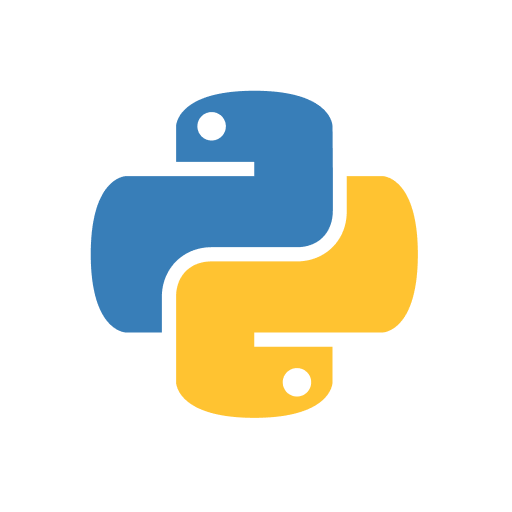Python Quant-Python for Quantitative Finance
AI-powered Python programming for quantitative finance.
How to analyze stock data with Python?
Guide me through the Black-Scholes model in Python.
Recommend Python tools for quantitative finance.
How can I plot financial trends in Python?
What are the commonly used Python libraries in finance?
Can you recommend some git repos for quantitative finance
Related Tools
Load More
Quant Finance
PhD level knowledge in Quant Finance, market data, news, and advanced browsing

Quant coder
I translate market insights into trading algorithms.

Quantitative Financial Engineer
Geared for professional quants with CFA, CQF, and PhD-level knowledge.

Quant AI
I'm a Quant, skilled in finding and backtesting profitable trading strategies.

Python Engineer
An expert Python engineer to help you solve and debug problems together.

Numerical Professor
Math Professor specializing in Numerical Methods
20.0 / 5 (200 votes)
Introduction to Python Quant
Python Quant is an advanced programming assistant designed to help users in the field of quantitative finance. Its primary purpose is to assist with the implementation, understanding, and optimization of Python code for financial analysis and modeling. Python Quant is tailored for both beginners and seasoned professionals, providing detailed support for various Python libraries used in finance such as pandas, numpy, scipy, matplotlib, and more specialized libraries like VectorBT, QuantLib, pyfolio, yfinance, QuantPy, and TA-Lib. It also supports libraries for machine learning and data analysis such as statsmodels, scikit-learn, pytorch, TensorFlow, and Keras. Python Quant's functionality extends to offering coding examples, best practices, and detailed explanations to enhance the user's coding experience and productivity in financial applications.

Main Functions of Python Quant
Code Assistance and Optimization
Example
Providing optimized code snippets for calculating the Sharpe ratio using pandas and numpy.
Scenario
A user needs to compute the Sharpe ratio for a portfolio of stocks to evaluate performance. Python Quant supplies efficient and well-documented code, ensuring accurate and fast calculations.
Library Support and Integration
Example
Guidance on integrating VectorBT for backtesting trading strategies.
Scenario
A quantitative analyst wants to backtest a new trading strategy using historical market data. Python Quant offers step-by-step instructions on setting up VectorBT, loading data, and running the backtest, complete with visualizations.
Machine Learning Implementation
Example
Implementing a neural network for predicting stock prices using TensorFlow and Keras.
Scenario
A data scientist aims to build a predictive model for stock prices. Python Quant provides a comprehensive guide to setting up the neural network, preprocessing data, training the model, and evaluating its performance.
Ideal Users of Python Quant
Quantitative Analysts
Quantitative analysts who develop and implement mathematical models for financial markets will benefit from Python Quant’s detailed coding assistance, optimization techniques, and support for specialized financial libraries. It helps them enhance model accuracy and computational efficiency.
Data Scientists in Finance
Data scientists focusing on financial applications can leverage Python Quant for its expertise in machine learning libraries and financial data analysis. It provides thorough guidance on building, training, and deploying predictive models, making it easier to extract actionable insights from financial data.

How to Use Python Quant
Visit aichatonline.org for a free trial without login, no need for ChatGPT Plus.
This platform offers an easy way to try out Python Quant without any initial commitments.
Familiarize Yourself with Python Libraries
Ensure you are comfortable with libraries such as pandas, numpy, and matplotlib, as well as specialized finance libraries like QuantLib, pyfolio, and VectorBT.
Set Up Your Development Environment
Install Python and your preferred IDE (such as PyCharm or VS Code). Ensure all necessary libraries are installed using pip.
Explore Documentation and Tutorials
Refer to the detailed documentation available for each library. Tutorials and example projects can help you understand common use cases and best practices.
Start Building and Analyzing Financial Models
Apply the knowledge gained to build and analyze financial models, leveraging Python Quant’s capabilities for quantitative analysis and financial modeling.
Try other advanced and practical GPTs
ADHDaptable
AI-powered ADHD support tool

Nutri Vision
AI-powered meal insights and nutrition tracking
interiorGPT
AI-Powered Interior Design for Everyone
Deal Architect (Mergers & Acquisitions Tool)
AI-powered M&A insights and strategy.

プロンプトガチャ
AI-powered prompts at your fingertips

Content Analyzer
AI-Powered SEO and Helpfulness Analyzer

Drupal Coder
Enhance your Drupal projects with AI.

Dating Profile GPT
AI-powered tool for perfect dating profiles

Create My Avatar
AI-powered custom avatar creation
課題/レポートフィニッシャー
AI-driven solution for effortless writing.

Calendar Event Creator
Create calendar events effortlessly with AI.

STAR Interview Coach
AI-Powered Mock Interviews, Real Results

- Data Analysis
- Machine Learning
- Backtesting
- Finance Modeling
- Algorithm Trading
Detailed Q&A About Python Quant
What is Python Quant?
Python Quant is a specialized version of ChatGPT designed to assist with Python programming for quantitative finance. It supports libraries like pandas, numpy, scipy, and specialized finance libraries such as VectorBT, QuantLib, and pyfolio.
What are the common use cases for Python Quant?
Common use cases include financial modeling, quantitative analysis, algorithmic trading, backtesting trading strategies, and machine learning applications in finance.
How can Python Quant help with financial modeling?
Python Quant can provide detailed programming support, offer example code for various financial models, and guide you through the implementation of complex algorithms using appropriate Python libraries.
Is Python Quant suitable for beginners?
Yes, Python Quant is designed to be useful for both beginners and seasoned professionals. It offers detailed explanations and step-by-step guidance, making it easier to understand and apply complex concepts.
What libraries does Python Quant support?
Python Quant supports a wide range of libraries including pandas, numpy, scipy, matplotlib, VectorBT, QuantLib, pyfolio, yfinance, QuantPy, TA-Lib, and machine learning libraries like statsmodels, scikit-learn, pytorch, TensorFlow, and Keras.